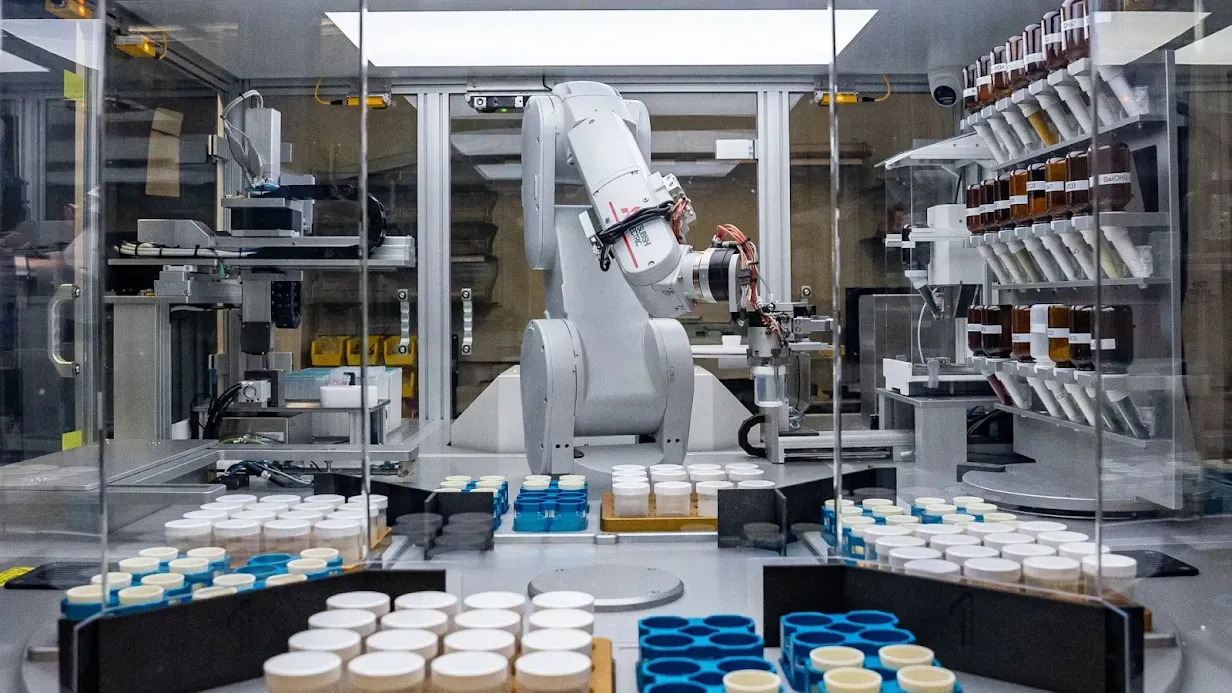What solutions will we use to build the projects of tomorrow? Scientific studies indicate that there are still billions of inorganic materials to be discovered. So far, human research has contributed 20,000 new products over years of work. Nowadays, the use of artificial intelligence and robotics multiplies and accelerates the possibilities, reaching more than 2 million potential compounds in a matter of months.

17 days to produce 41 new materials
The GNoME tool (graph networks for material exploration), promoted by Google DeepMind, took over from the Berkeley Laboratory’s Materials Project (which had already discovered and improved 48,000 products) and, with the help of robots, took only 17 days to make 41 new inorganic materials from 355 experiments.
To this day, it has multiplied this figure tenfold and reached 380,000 solutions that could already be used in electronics or renewable energy. The installation of the A-Lab, where this scientific prodigy is created, represented an investment of 2 million dollars and took 18 months to build. Given these results, it is not surprising that the journal Nature has echoed these advances.
How does this system improve upon previous research? Carla Gomes, co-director of the AI Institute for Sciences at Cornell University in Ithaca (New York), explains it succinctly: “this is like the ChatGPT of chemistry”. Based on instructions, robots mix and heat solid ingredients in powder form and analyze the effect of the experiment. In this way, the process is practically autonomous, even making decisions to improve the synthesis of the compound. Just as when we talk to ChatGPT, it learns from the information we have shared in that chat, which in this case is based on the scientific corpus.
Google DeepMind becomes an evolution and speeds up the emergence of different solutions thanks to the combination of two deep learning models. Firstly, it generates more than 1 billion structures that modify the fundamentals of something already known. On the other hand, it ignores the pre-existing and predicts the stability of these new elements based on chemical formulas. The results of its studies will be freely accessible and shared.
The possibilities of AI in architecture and interior design
The application of this type of disruption will allow us to spend more time on the creative part of projects at the expense of the technical part, which will be carried out by generative artificial intelligence. This was the case in this real example and is also asserted by this study published by the Massachusetts Institute of Technology (MIT): AI improves productivity by up to 40% for highly qualified workers compared to those who do not use it in their usual tasks.
The constant search for materials that not only meet structural, durability, and sustainability requirements but also offer aesthetic solutions finds in artificial intelligence a support to obtain unprecedented properties such as extreme lightness, transparency, or self-repairing capacity. These characteristics can lead to the creation of more energy-efficient buildings, with better use of natural light and a significant reduction in maintenance and repair costs.
Furthermore, the ability to design elements with specific thermal or acoustic properties could revolutionize interior design, enabling more comfortable environments tailored to the needs of their occupants. Sustainability is another crucial aspect that these new products could significantly improve. With growing concern about climate change and the environmental impact of construction, the possibility of using more eco-friendly and recyclable materials is particularly attractive. This could lead to greener architecture, where buildings not only integrate better with their surroundings but also actively contribute to the preservation of the environment.

A 100% autonomous future?
What challenges do we face in implementing these materials in architectural and design practice? To begin with, understanding that the human hand will always be necessary at some point in the process, however small it may be. It will also require a multidisciplinary approach, involving professionals from fields as diverse as science, architecture, engineering, and design. Surely, training programs will need to be recycled and adapted to integrate skills that allow managing tools and processing the information they return. The same will happen with construction and manufacturing regulations and standards, which will ensure the safety and traceability of the resulting products.
Material libraries should make room, as this is advancing at great speed.




